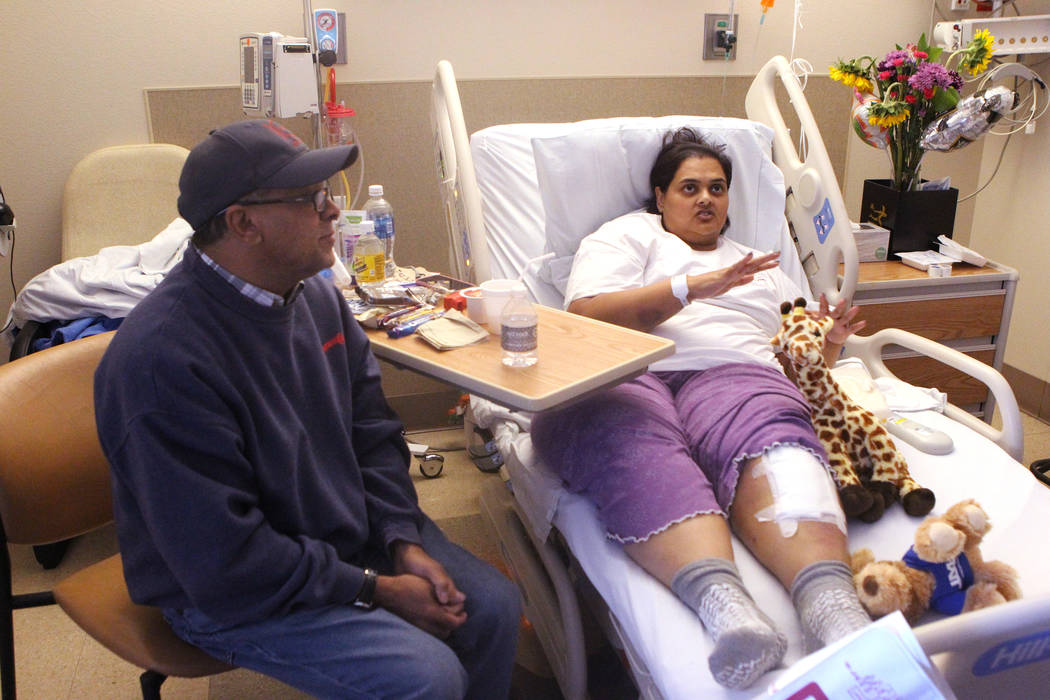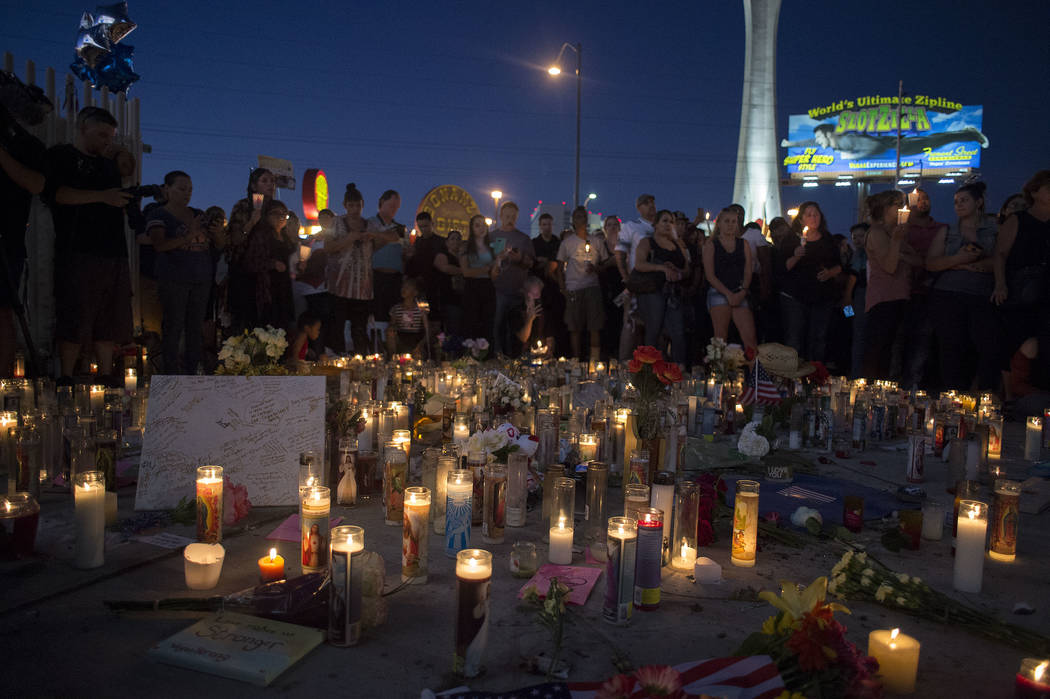Process forming to get funds to Las Vegas shooting victims
Samanta Arjune lies in her hospital bed, mostly thinking about what she just went through, the pain she feels from a gunshot wound in her leg and making a full recovery.
But at some point, she is also going to have to deal with the financial impact of her injury, suffered during the Route 91 Harvest festival shooting.
“It’s early yet, and I haven’t thought much about money,” she said. “There are so many things you don’t even think about when it comes to cost.”
Over $10.6 million has been raised to help pay for Arjune’s expenses and those of the 488 others who were injured and the 58 who died during the Oct. 1 shooting. But key questions about how the money will be distributed have yet to be answered.
Jeff Dion, deputy executive director of the National Center for Victims of Crime, and Kenneth Feinberg, a victim-compensation expert, have stepped up to help administer a GoFundMe account and National Compassion Fund Las Vegas and to distribute money to victims and their families.
Dion and Feinberg have helped distribute funds to victims after several tragedies. They worked together last year after the shooting at Pulse nightclub in Orlando, Florida, distributing $29.5 million to 229 people.
Arjune has a lot of questions but few answers right now.
Arjune, 46, said she doesn’t know what her insurance will cover for her stay at University Medical Center or for rehab. She doesn’t know what her copays will be for medication.
“I’ve been in (UMC) for more than a week … even if it’s 80-20 that’s going to be a lot,” she said.
And after she gets out of the hospital, she isn’t sure when she will be able to drive. Shot in the leg with a high-powered rifle, she might have to depend on taxis or other transit for a while.
And then there’s work.
“I don’t know if my employer will cover all the time I’m off,” she said. “I’ll be off at least a month.”
Who gets the money?
With Dion and Feinberg now on board, Clark County management is working on getting a local committee formed to manage the process and provide help to victims, according to Clark County spokesman Erik Pappa. Pappa declined to give additional details.
Key questions will have to be decided by the committee:
■ Are nonphysical injuries, like psychological injury, eligible?
■ How do you ensure that the distribution of funds is equitable?
■ What are the steps to distribute the money if family members disagree on who should get the money?
■ When will people receive money?
Dion and Feinberg said victims and families can expect to receive money within three to six months, assuming that a local committee is formed soon. Victims and families can expect to have to apply to receive the money.
The process
One of the first things the committee will determine is how much money there is to be distributed. Dion said it usually helps when all of the money is consolidated into one account.
Then, the committee will have to create a protocol for determining who is eligible and how much each person will get.
The protocols will go through a public comment period.
“Everybody who is on that list (by filling out the Victim and Survivor Contact Form) is going to get the draft protocols, they’re going to get notices of the town hall meetings explaining the protocols, they’re going to be sent applications. They’re going to be sent information on getting individualized help with your application. So if people want information, we don’t have the answers yet but we know where they need to sign up so that when those answers are available they will be pushed out to them immediately,” Dion said.
Feinberg said he has volunteered to draft the protocol for the local committee. He said he is currently working on that draft but that it is too soon to share details of what it entails.
After the protocol is finalized, applications will become available for people to apply for benefits. In the Orlando case, applications became available 14 weeks after the shooting, and victims and family members had six weeks to apply.
Transparency
Dion and Feinberg said there is “full transparency” in how much each person gets. Amounts will be approved by the committee based upon the aggregate of funds available, Feinberg said.
“What we’ve done in the past and our general approach has been that people in similar circumstances get the same level of benefits,” Dion said.
“The families of those who were killed all got the same level of benefits. People who suffered psychological trauma all get the same level of benefits. With injury cases there’s a little bit of variation based on severity, and we’ve used in the past a guide of number of nights hospitalized to categorize those.”
Dion said he and a team of staffers from the National Center for Victims of Crime will work with the FBI to validate claims.
Dion said staffers, including himself, are paid through separate fundraising efforts.
Contact Nicole Raz at nraz@reviewjournal.com or 702-380-4512. Follow @JournalistNikki on Twitter. Review-Journal staff writer Paul Harasim contributed to this report.























